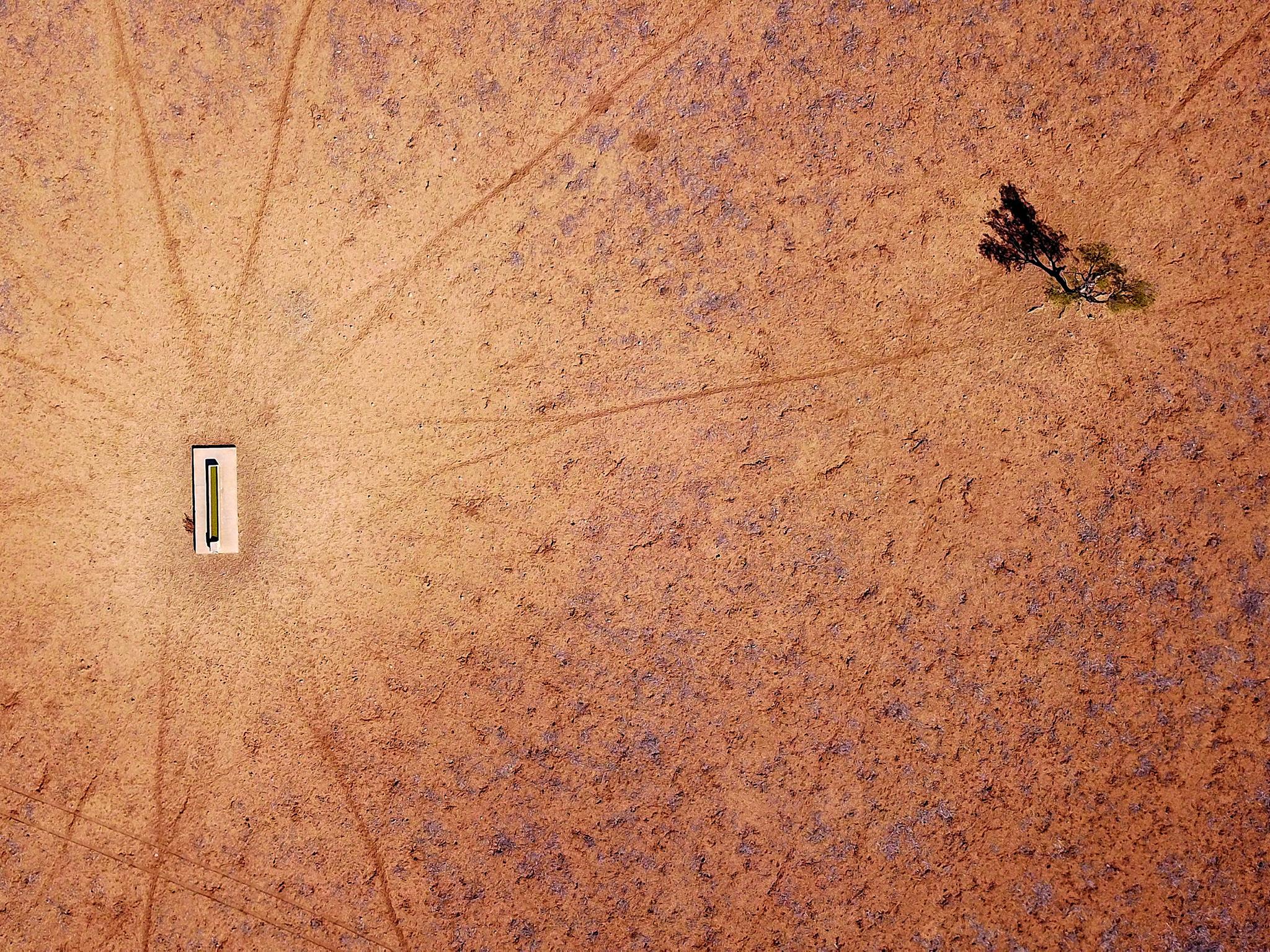Australia's drought: The cancer eating away at farms
The worst drought in living memory is sweeping parts of eastern Australia, leaving farmers struggling to cope and asking questions about the future

From ground level, Australia's drought looks like a featureless brown dustbowl, but from the air it transforms into an artistry of colour and texture as the land cracks under a blazing sun.
Circular dry plough tracks resemble the concentric circles in Aboriginal dot paintings that tell of an ancient mythology, starving cattle queuing for feed look like an abstract painting, and their black shadows stretching across the land a surrealist image.
But for farmer Ash Whitney there is no such beauty, just blood, sweat and tears as he struggles to feed his cattle, cutting the drying branches of Kurrajong trees – a last resort during the worst of droughts.
“I have been here all my life, and this drought is feeling like it will be around a while,” says a despairing Whitney, whose property near the town of Gunnedah is on the Liverpool Plains – a usually fertile area now withered, having received the lowest average rainfall in nearly 30 years.
The worst drought in living memory is sweeping parts of eastern Australia, leaving farmers struggling to cope and asking questions about the future.
Cattle farmer Tom Wollaston, born 70 years ago in the same house he lives in today, is afraid for what this drought will mean for his children, who aim to takeover the 2,300 hectare (5,683 acre) property when Tom “hangs up his boots”.
“I can't seem to be able to do anything else apart from just feed, and keep things going. The drought seems to be one step ahead of me all the time. We'll battle it out, but it puts a strain on everyone,” says Wollaston.
His wife Margo says droughts have a very negative impact, not only on her family but on the whole farming community around the nearby town of Tamworth in northwest New South Wales (NSW) state.
Australia's drought – the cancer eating away at farms
Show all 16“I find droughts a little bit like cancer – it sort of eats away at you, and it just gets drier and drier and more severe and more severe, and impacting on your life a lot worse. I do try really hard to keep the house and the garden clean and green because that keeps your head in the right space at night time”.
May McKeown, 79, and her son Jimmie live on a property near the northwest NSW town of Walgett and say they are extremely worried about the future, having had almost no rain since 2010.
“My great grandfather settled on this land in 1901, and he never had to remove cattle from the paddocks over there,” she says pointing to the west. “But we have had to remove them all and bring them closer to the homestead so we can more easily feed them.”
The farm has made little income in recent years and when they run out of hay in a few months, rising hay prices will leave them in a financial situation her family has never had to contend with in more than a 100 years, she says.
A quarter of Australia's agricultural production by value is grown in NSW and the state government has offered more than A$1bn (£555m) in emergency funding to farmers. It announced the latest tranche – A$500m – on 30 July.
The Australian Bureau of Meteorology says parts of Australia experienced the second-warmest summer (December-February) on record and have just been through one of the driest and warmest autumns (March-May) on record.
And the dry spell, which has left more than 95 per cent of NSW in drought, according to Department of Primary Industries, has no end in sight.
Subscribe to Independent Premium to bookmark this article
Want to bookmark your favourite articles and stories to read or reference later? Start your Independent Premium subscription today.

Join our commenting forum
Join thought-provoking conversations, follow other Independent readers and see their replies